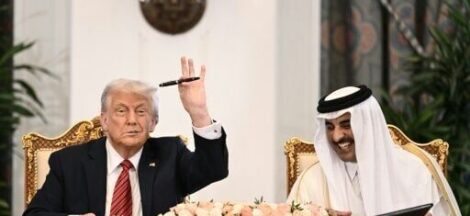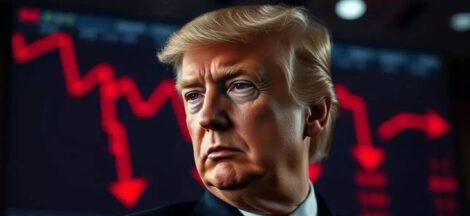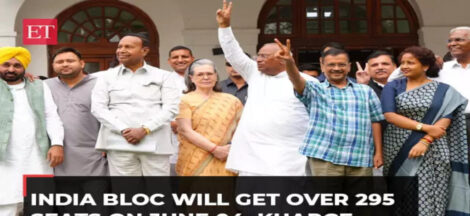Who says India needs immediate policy changes and fresh financial reforms to pep up its economy? The slow-down in the country’s economic growth and falling industrial production in the last three years have nothing to do with policy constraints, if any. They are not due to lack of fund flow in the economy and inflation, either. Industrial projects worth over Rs. 30 lakh crore (over half-a-trillion dollars) are ready for implementation, some since 2005. They are mostly in the core sector – power, steel, non-ferrous metals and mining. The prospective investors are from both the public and private sectors, including overseas enterprises which are keen on taking advantages of a government policy which allows an automatic route up to 100 per cent participation. They are not waiting for any new government policy. They only want the government to keep its existing policy commitments and allow smooth passage to investments.
In addition, around $150-billion worth investments are lined up for some 442 approved special economic zones the development of which is currently paralysed partly by political opposition, government indecision and bureaucratic hurdles, both at the centre and state levels. As on June 30, 2011, the government approved 585 SEZs. Only 143 with a combined investment of $ 41.94 billion are in operation. Also not included in the list of industrial projects eagerly awaiting government clearances for implementation are infrastructure sector investments in telecommunications, ports, container terminals, railways, large industrial corridors, roads and airports. The proposed nuclear power plants and exploration in oil fields which have already been allocated to successful bidders by the government are also outside the list.
If all these prospective investments find an easy access, the total would probably be close to the one-trillion-dollar mark, making India the world’s largest investment destination. Such astronomical levels of investments could spur the economic growth not only of India, but also of all its partners-in-progress across the globe. None of these investments require any new economic reform or new policy changes in such politically-sensitive areas as of banking and finance, privatization of and foreign participation in pension fund management, easy hire-and-fire labour laws, fuel and fertilizer subsidy abolition and FDI in multi-brand retail, which the union government is unable to bring about due to opposition from some of its own political constituents such as TMC and DMK as also from the opposition. It only requires a strong political will to drive the large on-going as well as proposed core and infrastructure projects through by removing the hurdles showing a spirit of accommodation and not confrontation with both the allies and the opposition.
The power sector alone is sitting on projects worth Rs. 11,35,142 crore to be implemented by March, 2017 which marks the end of India’s 12th Plan. The new capacity to be installed during this period is estimated at 76,000 MW. However, the capacity will exceed 1,00,000 MW if the 11th plan capacity backlog of 26,577 MW is added. The latter could not be implemented due to hurdles such as land acquisition, environment clearance, coal and gas linkages. The total fund earmarked for those incomplete 11th plan projects is over Rs. 1,56,000 crore. The land acquisition for expensive erection of transmission facility too is posing a big problem. A similar situation is stalling the progress of new coal mine projects, involving huge investments. As of now, some 149 coal projects are hanging fire. Several of them are in the private sector to which coal blocks were allocated by the government almost four years ago.
The latest buzz in the coal sector is the huge under-pricing and corruption in the allocation of coal blocks to private players by the government. The controversy may further escalate and delay the new coal projects.India’s present coal production at 554 million tonnes in 2011-12 is far short of its requirement. Last year, over 100 million tonnes of coal had to be imported to meet the demands of the power and steel industry. The government plans to raise the country’s coal production by 43 per cent to 795 million tones within the next four years. Coal India is prepared to invest over Rs. 30,000 crore in capacity expansion provided it gets all the clearances from the government and local bodies. Of late, the public sector coal company’s production performance and pricing had come under fire from none else than the country’s largest power PSU, NTPC Limited.
The steel sector is the next big core area of investment. Already several steel projects, including overseas entrepreneurs, are unable to make progress for want of land and raw materials such as coal and iron ore. The iron ore production has suddenly taken a U-turn following the exposure of a spate of corruption cases involving the mining mafia and powerful politicians in states such as Karnataka, Goa and Andhra Pradesh. This has adversely impacted the steel production. Ironically, India sits over one of the world’s biggest iron ore deposits and yet its steel mills are suffering from the shortage of this basic raw material.
India continues to be a major importer of steel. Last year, its steel production was estimated at around 80 million tonnes. The planning commission and the steel ministry have stressed the need for building a steelmaking capacity of 140-149 million tonnes by March 2017. The new investment planned in the steel sector during the 12th plan is Rs. 2,50,000 core. But, many believe that India may not have the capacity to produce more than 113 million tonnes of steel by 2017 due to project implementation delays.
While corruption has been more or less institutionalized in India, only those cases carrying high political overtones are generally in the limelight. They are often used as a tool to fix the opposition of the main ruling party at the centre. Thanks to the patronage it received from the police, state and central administration and political parties in power, irrespective of their ideologies, the mining mafia is cheating the nation to the extent of over Rs. 1,00,000 crore annually in taxes, levies and royalties from illegal mining and theft of minerals such as iron ore, coal, bauxite, ferrite, manganese, copper, zinc, uranium and cobalt. It is also causing a massive suffering to the user industries. The mining sector is heavily regulated and put under highly unreliable and corrupt supervisory control.
Suffice it say that if only the government were able to ensure the smooth sailing of these core sector industrial projects and infrastructure investments, the country’s economy would have probably jumped to a double-digit growth, creating millions of jobs, earning massive revenue to the national and state exchequers, substantially reducing budget deficits and public borrowings and helping in Rupee stabilization, even if the problem of high inflation continued. Inflation is an issue in any developing economy, which does not exercise strong and deliberate wage and price controls as a matter of state policy. Barring a few intervening years since the 1970s, Indian economy has always beaten the pressure of high inflation to grow.
The most unfortunate reason behind the current economic impasse is a political paralysis or missing political will-to-win and bureaucratic indecision which are pervading the atmosphere in the national as well as in many state governments. If it can’t cure the ills, the national government would do well to seek a fresh public mandate without delay so that it can govern with full authority and save the economy from a possible collapse. (IPA Service)
Up Next:
ONGC Must Inject More Vision In CSR


